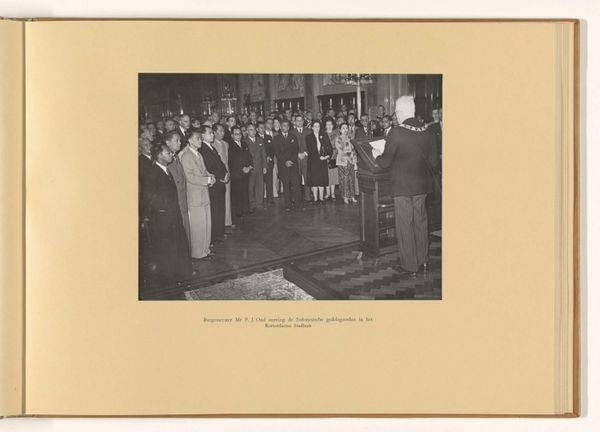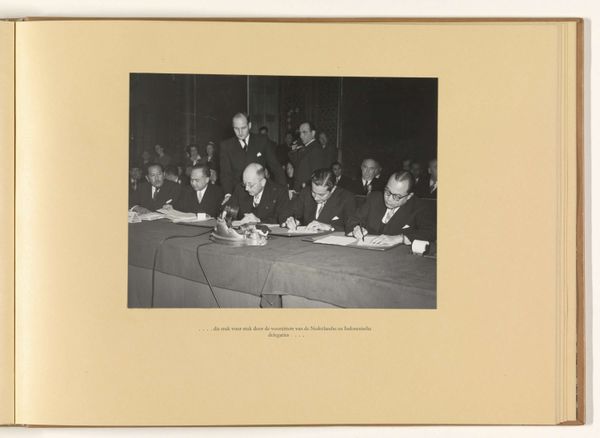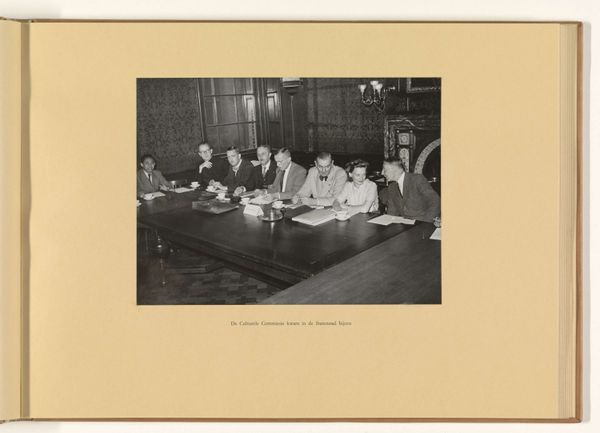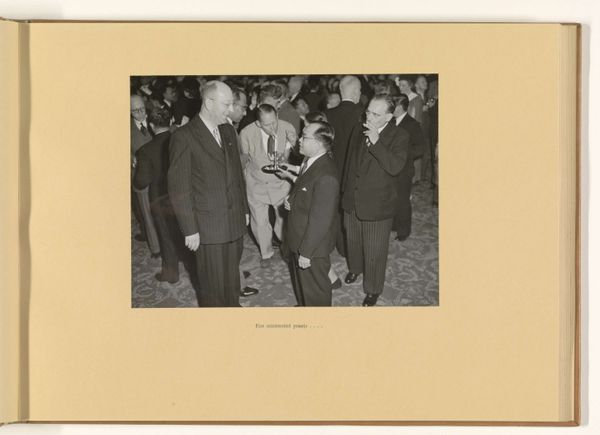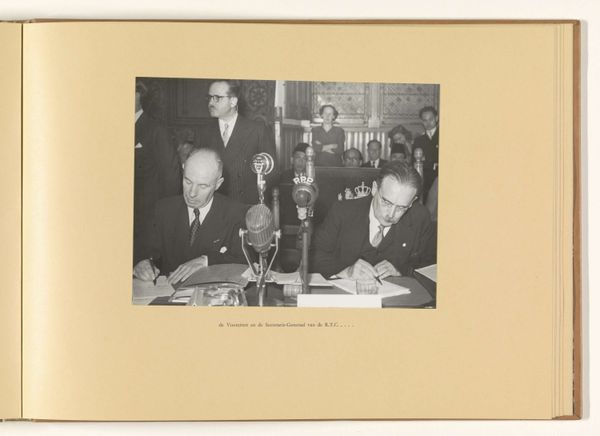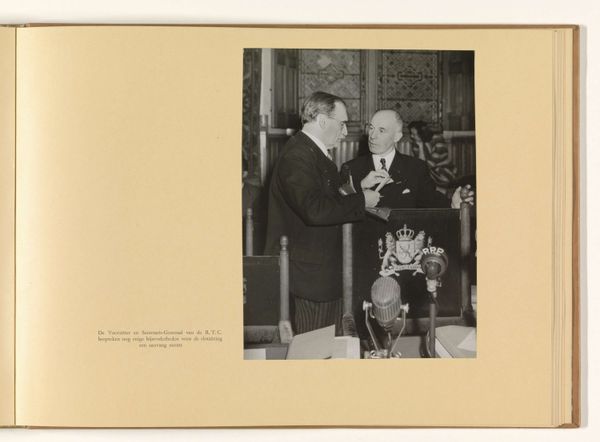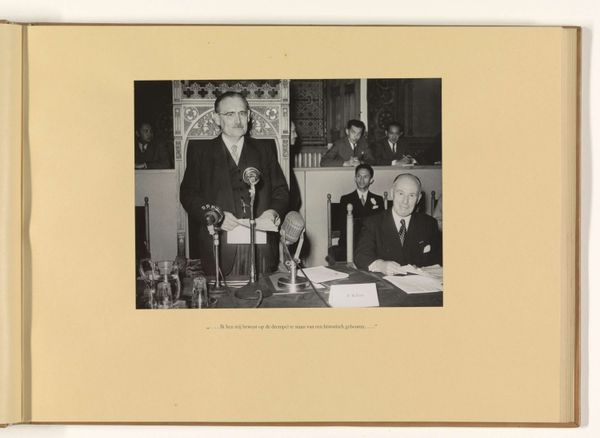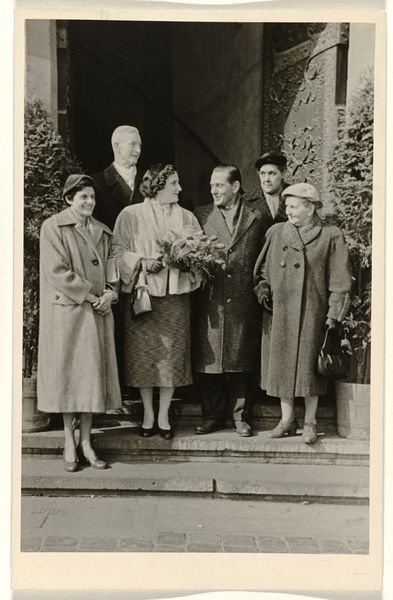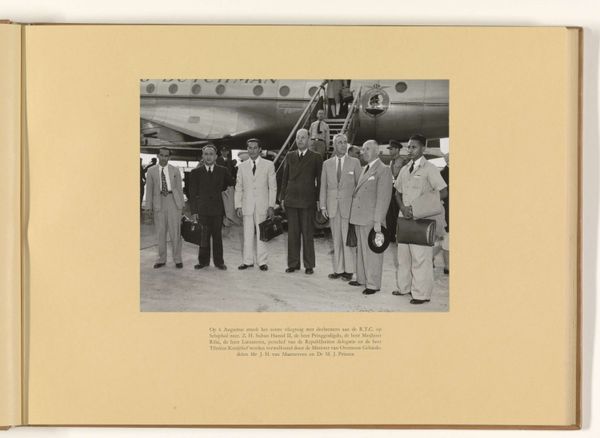
Ook 's-Gravenhage bleef niet achter. Hier ontving de wnd. Burgemeester Ir L.J.M. Feber de Indonesische gedelegeerden Possibly 1949
0:00
0:00
photography, gelatin-silver-print
#
portrait
#
dutch-golden-age
#
ink paper printed
#
photography
#
printed format
#
postcolonial-art
#
group-portraits
#
gelatin-silver-print
Dimensions: height 170 mm, width 226 mm, height 292 mm, width 400 mm
Copyright: Rijks Museum: Open Domain
Editor: This gelatin-silver print, possibly from 1949, shows an official reception: "Ook 's-Gravenhage bleef niet achter. Hier ontving de wnd. Burgemeester Ir L.J.M. Feber de Indonesische gedelegeerden" is the caption. The gathering feels so stiff, almost posed for posterity. As an iconographer, what catches your eye? Curator: The stiff formality is itself telling. These photographs were carefully staged to project an image of power and control. Note the arrangement of the figures; the placement almost creates a tableau, freezing the moment. This wasn’t a candid snapshot. What emotions does the imagery evoke, particularly when viewed from our modern understanding of post-colonialism? Editor: Well, I suppose there’s an inherent tension – the contrast between the formal Dutch figures and the Indonesian delegates hints at the complex relationship between the colonizer and the colonized. There is that one Indonesian woman standing tall and proud, but she stands out against all these Western suits... It’s like two worlds colliding. What can we learn from their dress? Curator: Precisely! Clothing, then and now, acts as an incredibly powerful signifier. The stark contrast in attire emphasizes a difference but also a negotiation of power dynamics. Look at how those visual signifiers tell a cultural story: on one hand, Dutch officials donning European suits, signifying their role in the world. Conversely, observe that sole woman: her presence subtly pushes at those assumptions by using familiar fabrics in ways we might now appreciate. It acts as a potent assertion within the scene. Editor: It’s a good reminder that even seemingly straightforward images carry hidden meanings, that tell stories in their subtext. Thanks! Curator: Indeed. Paying attention to these symbolic details allows us to more fully understand our place in the narrative of power relations throughout time.
Comments
No comments
Be the first to comment and join the conversation on the ultimate creative platform.
